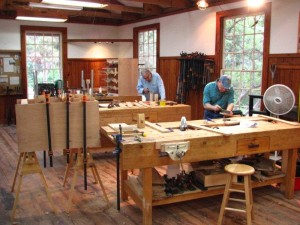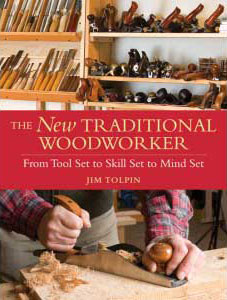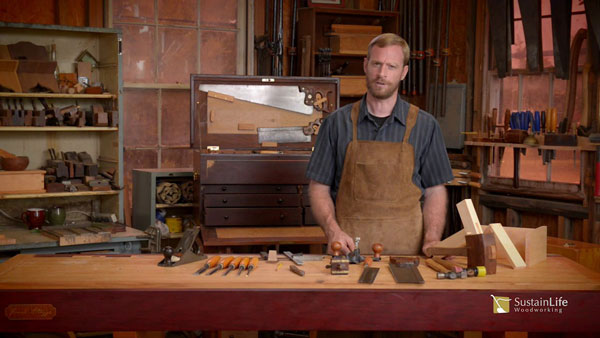 One common woodworking question is, “How large should my shop be?” It seems that woodworkers always need more space. (If only we could fit that next dream machine!) Even if you’ve got a shop space already, it’s often smaller than most of us would like–a garage, spare room, or closet sometimes just doesn’t seem big enough.
One common woodworking question is, “How large should my shop be?” It seems that woodworkers always need more space. (If only we could fit that next dream machine!) Even if you’ve got a shop space already, it’s often smaller than most of us would like–a garage, spare room, or closet sometimes just doesn’t seem big enough.
But then you might ask yourself, “Why do I need all this space?” If you think about it, it’s all those machines: since you have to take the wood to the table saw, planer, jointer or router table, you need a good amount of floorspace. On the other hand, in hand tool woodworking you have the wood on or around the bench and bring the hand tools to the work; it doesn’t take that much room. Here’s what Fine Woodworking said on hand tool layouts in the middle of a good-sized article on shop layout:
One last note: If you choose to work with hand tools only, many of these rules don’t apply. Even if you make exceptions for a jointer and bandsaw to speed things up, you’ll able to work comfortably in much less space, with only a workbench and tool cabinet to accommodate.
Asa Christiana. “Make Better Use of Your Space.” Fine Woodworking Issue #237, Winter 2013/2014. pg. 52.
When you work wood primarily with hand tools you don’t need a lot of space or infrastructure. Just as in the days of Colonial America, your workshop could simply be a spare room in your house as it was for the Dominy family of Long Island. You won’t need much space — because it’s the machines that take up so much room in the typical power tool shop. It’s not just the machine’s footprint, they also need a lot of space around them. In working with stationary machines you constantly have to move the wood past the machines rather than move the tools along the wood at a singular workstation (your workbench)….
If you are already familiar with machine-tool woodworking, you will likely be surprised to learn that you can create a completely adequate hand tool shop in a room the size of a typical master bedroom — perhaps as small as 150 square feet if you can avoid storing your excess lumber there. I have worked for more than a decade in a basement shop measuring 18 ft. x 20 ft. — and I’ve built all manner of furniture pieces and even an 18 ft. rowboat in that space!
Tolpin, Jim. The New Traditional Woodworker. Cincinnati: Popular Woodworking Books, 2010. pg. 13. Paperback.
As you can see in our online woodworking courses, I don’t need much room either. It’s entirely possible for me to put on a whole demonstration within a very small area:
Granted, the School of Woodworking has a good deal of floorspace, but that’s because we teach, demonstrate, build furniture for a living and have four folks working full time in there. My home shop, where we have done most of the fliming is a 24′ x 40′ shop. Of course I am using the shop to make my living in so I have machines and wood storage, and need the extra space. However, I have found that 75 percent of my work is done in an area that is about 12′ x 15′! That in fact is the area you see in the films.
So keep on making shavings in whatever shop size you’ve got. It may even be better than too much space; you can easily store all your hand tools within a step or two of your bench.
Frank Strazza
Check out our online woodworking courses!


Comments are closed.